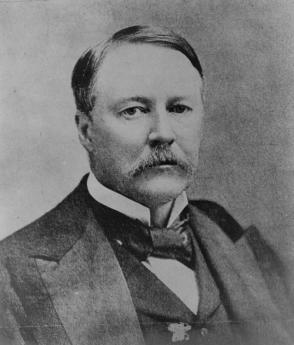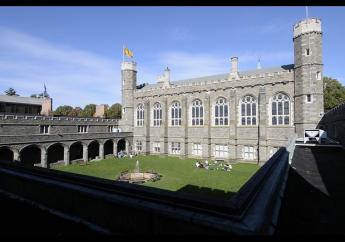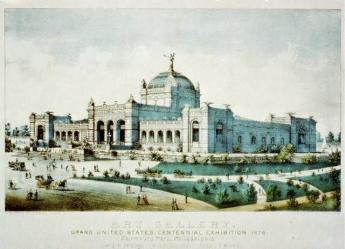Related Topics
Historical Preservation
The 20% federal tax credit for historic preservation is said to have been the special pet of Senator Lugar of Indiana. Much of the recent transformation of Philadelphia's downtown is attributed to this incentive.
Tourist Trips Around Philadelphia and the Quaker Colonies
The states of Pennsylvania, Delaware, and southern New Jersey all belonged to William Penn the Quaker. He was the largest private landholder in American history. Using explicit directions, comprehensive touring of the Quaker Colonies takes seven full days. Local residents would need a couple dozen one-day trips to get up to speed.
The Main Line
Like all cities, Philadelphia is filling in and choking up with subdivisions and development, in all directions from the center. The last place to fill up is the Welsh Barony, a tip of which can be said to extend all the way in town to the Art Museum.
Montgomery and Bucks Counties
The Philadelphia metropolitan region has five Pennsylvania counties, four New Jersey counties, one northern county in the state of Delaware. Here are the four Pennsylvania suburban ones.
Railroad Town
 It's generally agreed, railroads failed to adjust their fixed capacity to changing demands. It's less certain Philadelphia was pulled down by that collapsing rail system.
It's generally agreed, railroads failed to adjust their fixed capacity to changing demands. It's less certain Philadelphia was pulled down by that collapsing rail system.
Right Angle Club: 2013
Reflections about the 91st year of the Club's existence. Delivered for the annual President's dinner at The Philadelphia Club, January 17, 2014.
George Ross Fisher, scribe.
Main Line: Overbrook to Paoli

|
| Alexander Cassatt |
Greg Pritchard, who has made scholarship of the Main Line a central part of his life, recently addressed a meeting of the Right Angle Club. To Greg, the Main Line is the set of commuter rail stops from Overbrook to Paoli, representing what was once the heart of the Pennsylvania RR. It changed into a spur of the real main line, running from New York to Chicago, the central monument left by Alexander Cassatt, its president. Times really do change a lot. There is now only one dingy daily passenger train from New York to Harrisburg, which Amtrak would dearly like to eliminate entirely. The Pennsylvania Turnpike was just too much competition, and air travel has eliminated all railroad passenger interest in further points like Pittsburgh, Chicago, and points west. The real main line of long-distance rail on the East Coast now runs north-south, called the Northeast Corridor, essentially beginning in Boston and ending at Washington DC. Philadelphia is central to all of these versions of main lines, although a thirteen-year lawsuit was required to break combined Pennsylvania and New York Central railroads into SEPTA, Amtrak, and Conrail. At the moment, Conrail the freight line is making tons of money, Amtrak the passenger long-haul line would soon die without government subsidy, and all commuter railroads are subsidized by their local communities. There is a lot of talk about billion dollar investments in high-speed trains like they have in Japan and France, but anyone familiar with the economics of rail transportation just shudders at the thought. Railroads are profitable ways to haul long-range bulk cargo. Passenger lines, long and short, can only be justified if they cost less than expanding highway and airline transportation, which the public obviously prefers. Philadelphia is in the peculiar position that the real estate investment has already been made in passenger rail; is it cheaper to build on what already exists, or is that a doomed relic of the past?
But back to Greg's favorite topic, the revered and treasured 19th Century stations on The Main Line. They were mostly built from 1860 to 1890, along the path of what was then the main line to Chicago, but destined to become a spur leading to the real center of east-west traffic, which went from New York to Chicago further north from Philadelphia, intersecting with what became the Philadelphia spur at Paoli. In the days when Philadelphia was one of the richest cities in the world, the spur was a glamorous suburban real estate development. The stations were built, the mansions scattered along at some distance, and servants houses clustered around the stations. The towns were renamed with Welsh names like Bryn Mawr (instead of Humphryville). A culture was built up, probably unique in the world for being centered on railroad executives, and novels like Kitty Foyle and movies like The Philadelphia Story celebrated the glamor of it all. It's probably true that you can find more fifty-room mansions there than just about anywhere else, but the automobile and good public schools mainly drove the prosperity of the 20th Century, as the railroads dwindled away.

|
| Bryn Mawr College |
The stops on the Main Line begin with Overbrook and continue on through Merion, Narberth, Wynnewood, Ardmore, Haverford, Bryn Mawr, Rosemont, Villanova, Radnor, St. David's, Wayne, Strafford, Devon, Berwin, Daylesford, and Paoli. The main line starts where Philadelphia taxes end and gets progressively newer in harness with the gradual construction of fashionable homes as you get further from the city. At first, Paoli was a place where the out of service trains was stored, but gradually became a fashionable area, which is beginning to leapfrog over the King of Prussia shopping center into the farmlands to the north. The center of gravity of suburban aspirations moves steadily further into the surrounding countryside but is outgrowing the old commuter rail system, and there is something of a movement back to the city. That is to say, urban sprawl is running into the discovery that it's just too traffic-jammed to commute that far, except by train. Most folks are familiar with the jingle that "Old Maids Never Wed And Have Babies" which is supposed to help commuters remember what stop they are approaching. However, the topic mentioned by the jingle and the fact that it ends with Babies (Bryn Mawr) instead of Paoli, strongly implies it was written by a student at Bryn Mawr College for Women.

|
| Centennial Exhibition in Fairmount Park |
The old brick stations have been adopted by affectionate commuters, turned into historical preservation societies. They have a varied history, but quite often the station master lived upstairs, and the first floor housed a branch of the post office. When the railroad straightens out its right of way, the stations have to be moved, often at great expense. As they progressed further into the countryside, sometimes grand resort hotels were built for those who wanted to escape the summer heat in the city, or in 1876, to house attendees to the Centennial Exhibition in Fairmount Park. As these hotels lost popularity, they became excellent bargain real estate for a new college, to begin with, a lessened expense, and the upscale neighborhood which soon clustered about the area insisted, that these colleges move up-scale and get good ratings in U.S. News and World Report. Alexander Cassatt insisted that all transcontinental trains must make a stop in Paoli near his home, and there are even a few stations like Upton which were for the sole use of a single estate. So, at one time when ignorant non-Philadelphians on the transcontinental trains would sniff, "Why would the trains all stop out here in the country?", the Philadelphians in the know would just bury themselves in their newspapers.
Footnote: This interesting talk stimulated me to go read some of the history posted in the Main Line station houses, and in particular the one in Narberth. Narberth was a village long before the railroad came along, and it still holds itself a little aloof from the rest. These and similar places relate that Narberth used to be Libertyville, Bryn Mawr used to be Humphrysville, Cynwyd was once Academyville, Marionville became Merion, and Narberth was purchased from William Penn in 1682 by Edward Reese Price. It is also noted that William Thomas donated his property to the PRR in 1851, and the PRR purchased the struggling "Old Columbia" railroad, formerly the "MainLine of Railroads and Canals", from the state in 1857. Narberth quickly became the center of fashionable summer hotels.
Originally published: Wednesday, February 27, 2013; most-recently modified: Thursday, May 23, 2019
| Posted by: Augusto Minardi | Dec 1, 2013 6:15 AM |
| Posted by: Tm | Aug 18, 2013 7:50 PM |